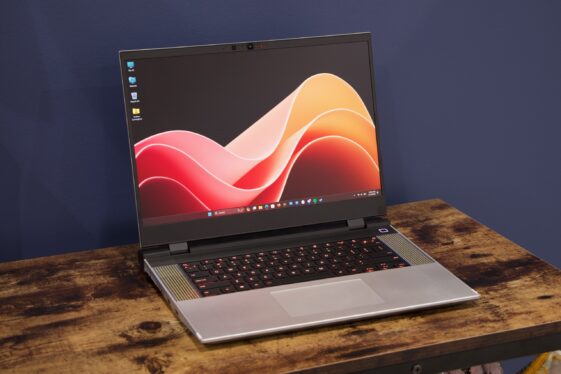
Enlarge / The Framework Laptop 16. (credit: Andrew Cunningham)
| Specs at a glance: Framework Laptop 16 | |
|---|---|
| OS | Windows 11 23H2 |
| CPU | AMD Ryzen 7 7940HS (8-cores) |
| RAM | 32GB DDR5-5600 (upgradeable) |
| GPU | AMD Radeon 780M (integrated)/AMD Radeon RX 7700S (dedicated) |
| SSD | 1TB Western Digital Black SN770 |
| Battery | 85 WHr |
| Display | 16-inch 2560×1600 165 Hz matte non-touchscreen |
| Connectivity | 6x recessed USB-C ports (2x USB 4, 4x USB 3.2) with customizable “Expansion Card” dongles |
| Weight | 4.63 pounds (2.1 kg) without GPU, 5.29 pounds (2.4 kg) with GPU |
| Price as tested | $2,499 pre-built, $2,421 DIY edition with no OS |
Now that the Framework Laptop 13 has been through three refresh cycles—including one that swapped from Intel’s CPUs to AMD’s within the exact same body—the company is setting its sights on something bigger.
Today, we’re taking an extended look at the first Framework Laptop 16, which wants to do for a workstation/gaming laptop what the Framework Laptop 13 did for thin-and-light ultraportables. In some ways, the people who use these kinds of systems need a Framework Laptop most of all; they’re an even bigger investment than a thin-and-light laptop, and a single CPU, GPU, memory, or storage upgrade can extend the useful life of the system for years, just like upgrading a desktop.
The Laptop 16 melds ideas from the original Framework Laptop with some all-new mechanisms for customizing the device’s keyboard, adding and upgrading a dedicated GPU, and installing other modules. The result is a relatively bulky and heavy laptop compared to many of its non-upgradeable alternatives. And you’ll need to trust that Framework delivers on its upgradeability promises somewhere down the line since the current options for upgrading and expanding the laptop are fairly limited.
Read 52 remaining paragraphs | Comments


